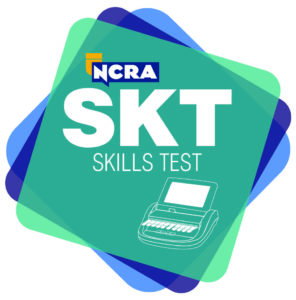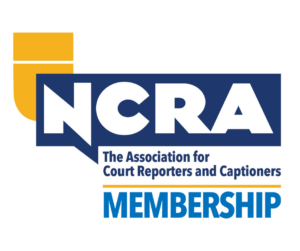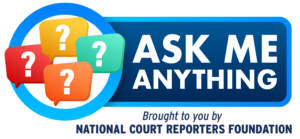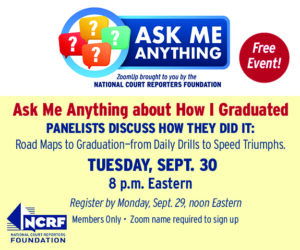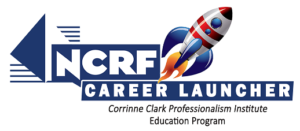By Katherine Schilling
¿Puedes leer esto?
これが読めますか
K-/U/RAED/TH-?
Before I knew stenography, I knew Japanese. I started learning it on my own in junior high, had formal education in the college classroom setting, and then did full immersion in Japan. After years of learning, I got to the point where I was using it on the job, and I have been a freelance translator for the better part of a decade now. So when I first dove into court reporting, I immediately looked at my court reporting classes as learning another language. Many elements of theory class and speedbuilding reminded me of lessons in Japanese class, as they apply the same principles used in second-language acquisition.
The four pillars
Not including the element of culture, language fluency can be broken down into four chief skills: writing, reading, speaking, and listening. Skill for skill, stenography requires fluency in each to become a solid reporter. First, we must write this new language with its own unique alphabet of not only letters but also sounds and briefs. Next, we learn how to read our own notes and speak them aloud. The reason reading our notes aloud is encouraged in school is because the more quickly you read steno, the more easily you build speed. Lastly, listening. This, by far, is the most important of the steno skills.
Stenography puts our listening skills to the ultimate test. Where we have new grammar structures to contend with when learning another language, we have to learn to listen to our (typically) native language in an entirely new way as court reporters. Take the sample sentence: How many of the district attorney’s documents have been brought into the courtroom in this case? No doubt many of you automatically homed in on the common briefs or two- or three-word phrases in that sentence. With practice, breaking down sentences like this becomes a subconscious reflex for court reporters, but it is something that must be learned as a student. Instructors often advise students to learn this skill by sitting in a higher speed class and simply listening in order to train their brains to process the information at a faster rate and have it translate directly from their ears to their fingers. Just as in learning a traditional language, the four skills of writing, reading, speaking, and listening must be learned and practiced in order to attain fluency in stenography.
Quality not quantity
In the case of learning a second language, it’s often not how many words you know, but what words you know. Rather than tackling every possible word under the sun, smart learners need to put only 20 percent of their efforts towards learning the “right” words in order to achieve 80 percent comprehension, solely due to the frequency of those words. A capable language instructor will tailor vocabulary lists to cover only the most common words for that language. Train station may be almost obsolete in American society, but it’s the central hub of a Japanese cityscape. Goat is associated more with Old MacDonald in English preschools, but you’ll encounter it in the first week of Vietnamese class because of its popularity in the country’s dishes.
It is for this same reason that court reporting instructors have students drill lists of the 1000 most common English words. Our earliest briefs and phrases learned in theory are hand-selected because of their practicality and relevancy in a legal setting. You’re not likely to learn “evidence” in your first few months or even years of Spanish class, but it’s one of the first words we learn in court reporting class. This focus on the most common sounds, words, and phrases is what quickly enables a student to become fluent in stenography just as in any language.
Building off
As it is impossible to really learn any language “from scratch,” polyglots use their previous knowledge of their own language or life experience to piece together new grammar rules and extrapolate to create unique sentences in the language they are learning. This tool, more often found in adult learners, on account of their more intimate knowledge with parts of their own language, facilitates the language-acquiring process.
Likewise, after covering the building blocks of the stenographic language in theory, disciplined students will naturally begin stringing together phonetic strokes to build new words not taught in class. Later on throughout speedbuilding, students will devise new briefs and phrases as the need arises based off of the patterns of briefs and brief families learned before. In this way, court reporters use not only the arsenal of linguistic knowledge from their native language to apply to stenography, but they build off of the rules and patterns established in earlier steno lessons to boost their fluency.
Full immersion
The last outstanding similarity I see with court reporting school and a language class is the impact that discipline and immersion can make. If one thing was made clear by Japanese class in school, it’s that those who embraced the language head-on made the most progress. Students who did all of the homework, practiced outside of class, and reviewed future lessons became fluent more quickly than those who only dabbled in the language as a passing fancy and left it behind when they left the classroom. This can also be seen in court reporting students, and the difference is evident as early as in theory. Students need to take a proactive role in their learning if they hope to excel in court reporting school. Stay on the machine after class, practice dictation from sources outside of your textbook, and immerse yourself in court reporting by attending industry conventions or speaking with working reporters. With studies debunking misconceptions about needing the “knack” or “gene” to become fluent in another language, that only leaves discipline and passion to dictate your success.
From the way in which theory lessons are structured to the benefits of embracing stenography outside of class, you’ll find the same principles of second-language acquisition in court reporting school as in any language class. When you see these similarities, you can appreciate your own fluency in this wonderful language and consider yourself, at the very least, bilingual. And as my Japanese teacher said in school, “Language is a game.” So get off the bench, have fun, and play to win!
Katherine Shilling is a high-speed student at West Valley College in the Bay Area with the goal of reporting in Japan. She can be reached at kschilli@gmail.com.
